Hi, I'm Luke Kelly
I create meaningful experiences.
I'm a Lead UX Designer with 9+ years experience delivering end-to-end solutions for a range of products and services. I'm passionate about maximising outcomes through high-functioning design.Currently, I lead the design systems team at N-able.
Hi, I'm Luke Kelly
I create meaningful experiences.
I'm a Lead UX Designer with 8+ years experience delivering end-to-end solutions for a range of products and services. I'm passionate about maximising outcomes through high-functioning design.Currently, I lead the design systems team at N-able.
Leading design systems
N-able
Design System
UI Design & Documentation
Project Management

Evaluating 'experimental' design at scale
N-able
Research
UI Design
Design patterns
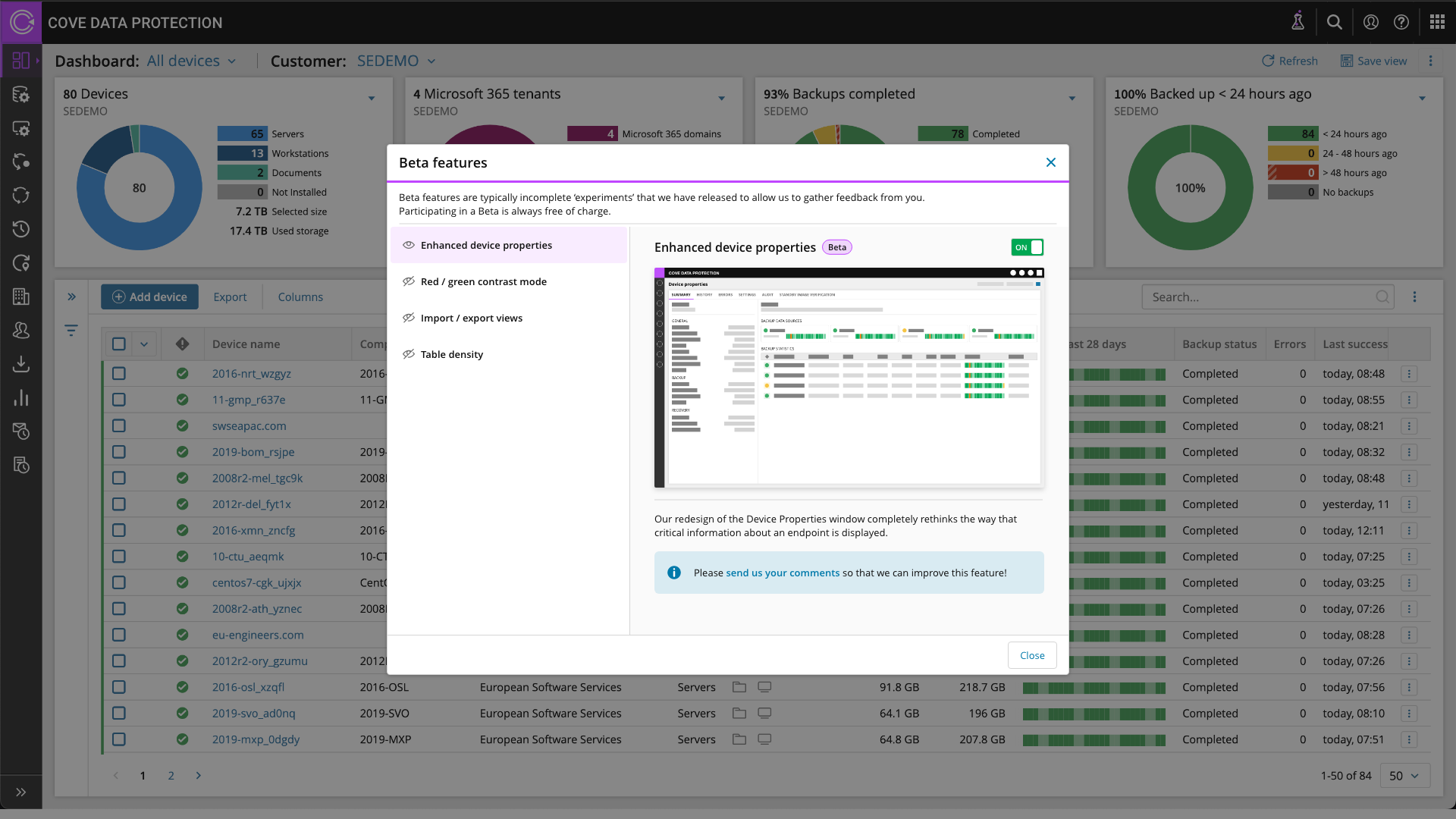
Designing and communicating transformative UI
N-able
Research
UI Design
Design patterns
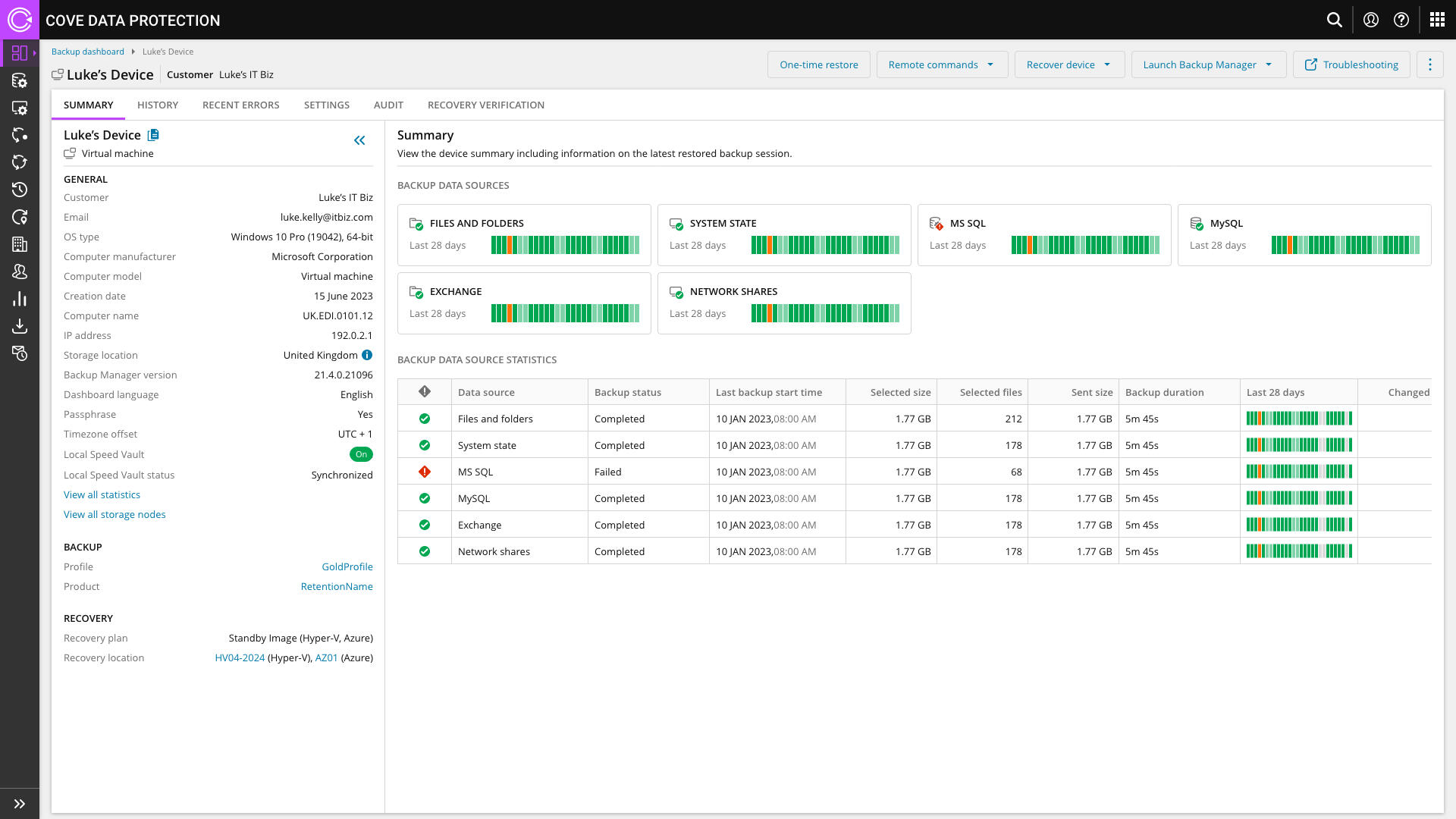
Curating a Design System to optimise NHS applications
Vision Health
Role: Senior UX Designer | Project Management | UX/UI Design
Tools: Figma | Confluence | Jira
Year: 2019 - 2020
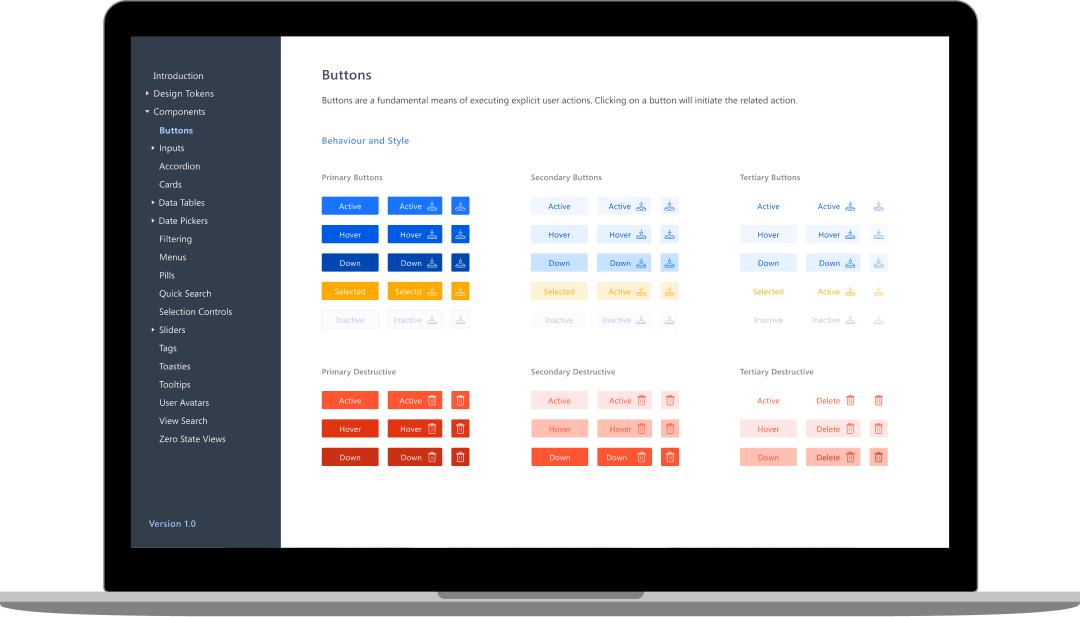
Background
Vision Health is an intelligent healthcare software provider based in the UK. They provide a suite of innovative applications for both the NHS and private medical organisations.
Challenge
Our goal was to define, design and develop a single source of truth for Vision's suite of applications in order to reduce wastage and encourage code re-use. This would ensure a consistent and familiar user expierience.
Optimising business processes
Prior to a design-led approach, 4 different product teams worked in silos where designers and developers operated solely within their respective teams. Little time was afforded to focus on the discovery and definition of each feature due to tight contractual deadlines. As a result, an escalation in the duplication of features across products meant that the user experience varied greatly across each application.An evaluation of the design and development process used across the Vision products helped the team shape the user experience at a micro and macro level.
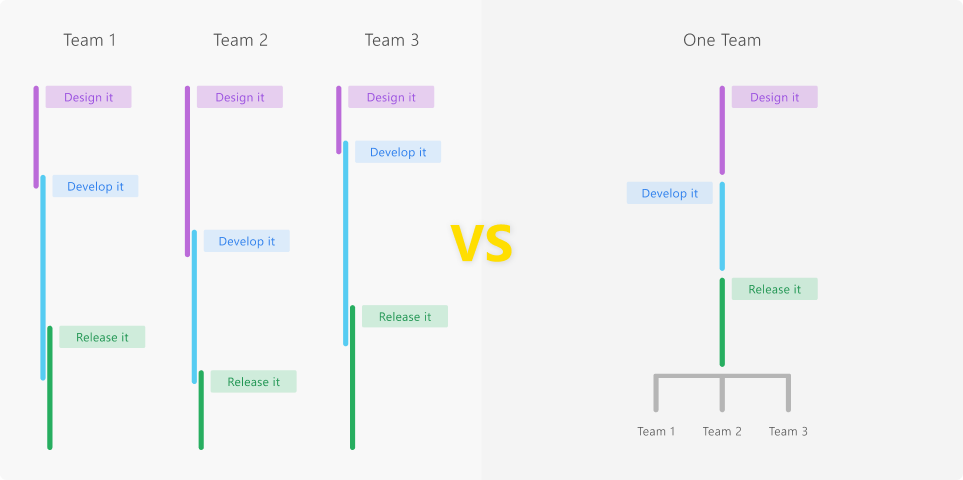
Defining the benefits
Increased velocity and time to market with less time and money spentImproved product value, consistent UX design and cleaner codeIncreased productivity, collaboration and knowledge sharing between teams focusing on problem solvingCreating one common language means that all stakeholers across each product team will understand and cmmunicate better

Following a new process
How better to instill a new way of thinking? A Jira kanban, of course.
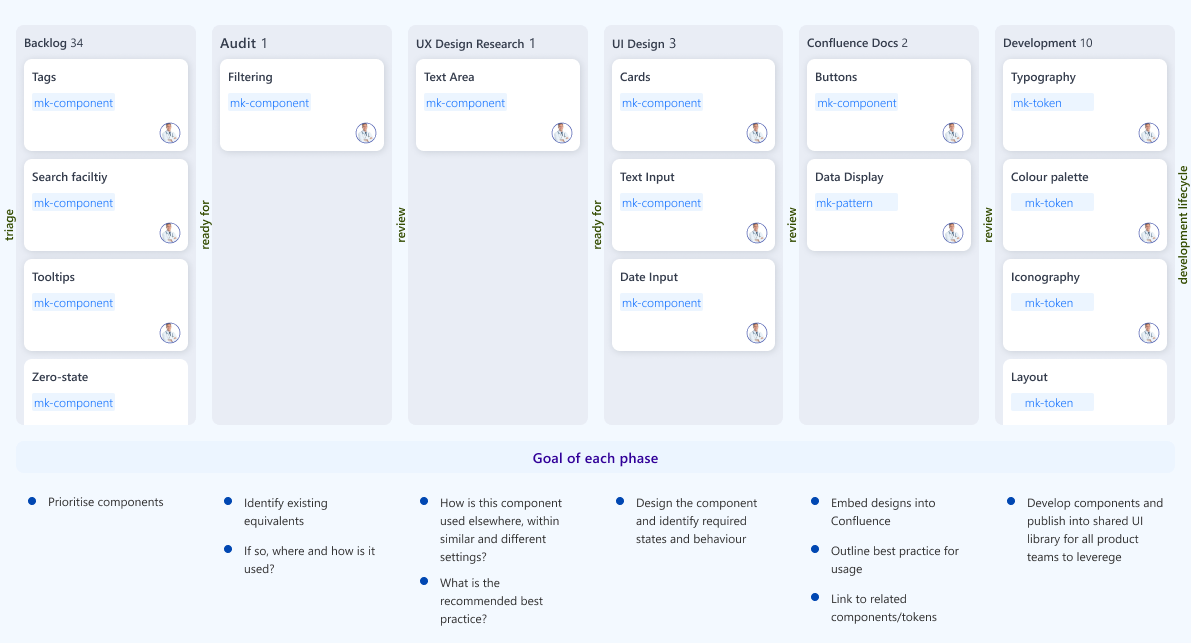
What are the benefits?
Increased velocity and time to market with less time and money spentImproved product value, consistent UX design and cleaner codeIncreased productivity, collaboration and knowledge sharing between teams focusing on problem solvingCreating one common language means that all stakeholers across each product team will understand and cmmunicate better
Key takeaways
Amongst other targets and responsibilities, the team have put great effort into researching, defining and crafting a Design System with best practice and scalability at its core. We set the bar and layed out the foundation on which our applications will be designed and built moving forward. All whilst ensuring we meet the needs and expectations of what today’s users come to expect from a great clinical system.Moreover, it's proven to be a catalyst for real change within the design team - shifting our focus to identifying new features and behaviour which can make a real difference in the healthcare industry and to our users.We’re continuing to leverage Medkit to realise features and enhancements within our roadmap. The centralisation and reuse of our common components so far have confirmed our hopes and expectations from time-saving and consistency perspectives and more.Medkit also enables us to give the right levels of attention to the data and content within our applications. By this, we mean to ensure we identify key user journeys, intelligent relationships in data and present information to our users in a way which will help them complete their tasks and goals to the best of their ability.
Leading design systems
Leading a cross-functional design system team requires understanding the end user, empathy for the internal user, and dedication to the craft of user interfaces.
Background
N-able's SaaS ecosystem faced challenges with a fragmented user experience as a consequence of inconsistencies in design standards and poor engineering collaboration. The absence of centralised variables led to the creation of custom CSS and inadequate UI frameworks, causing unique behaviours across products.Ultimately, the look, feel, and overall experience hampered the ability to scale design solutions throughout the business effectively.
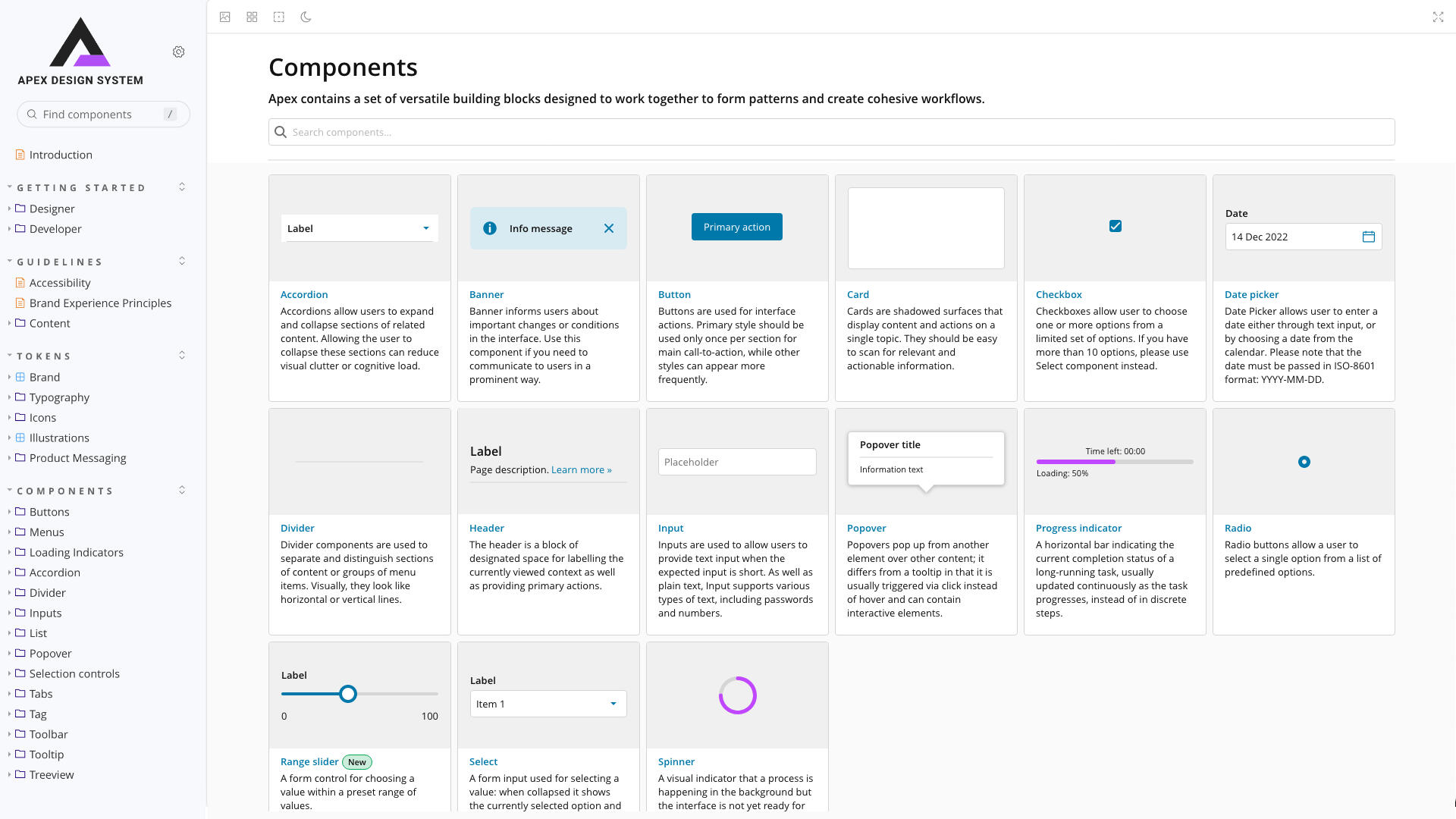
Responsibilities
Definition
Established the structure of the UI component library, including components, specifications, and UX best practice documentation.
Regularly conducted end-to-end audits of our UI, visuals and design system, identified designs to solve discrepancies and pushed the visual design system forward.
Implemented the "Apex Satisfaction Survey" to measure the impact of the design system, gathering qualitative feedback from designers quarterly and incorporating feedback into the team's roadmap.
Established AccessibilIty initiative and roadmap to achieve AA WCAG compliance
Advocacy
Ran "Design System Syncs" to ensure alignment with UX direction, leading to consistent delivery of high-quality design solutions.
Conducted training sessions for designers to optimise the use of shared libraries and reinforce team processes, fostering a unified design approach.
Introduced product teams to the concept of a Design System, fostering buy-in and promoting its value and benefits.
Often presented the system’s mission, library, and process to internal groups, including Executives, Product Managers, and other design and development teams throughout the enterprise.
Adoption
Report team and system progress regularly to key stakeholders and the rest of the organisation.
Provided design leadership and guidance to teams around using shared patterns, and identify opportunities to create new patterns and components within their workstreams
Provided a framework for accessibility and inclusion in both the design and development process.
Outcomes
Developed a contemporary design system tailored to the diverse requirements of a SaaS ecosystem.
Established an efficient approach for generating and evaluating future vision concepts.
Implemented a strategy to ensure a unified user and brand experience across all products.
Formed a dedicated design systems team strengthened by collaborative contributions from the organisation.
Evaluating 'experimental' design at scale
Showcasing opt-in experience enhancements enables validation with a broad user base before deployment across a product ecosystem.
Background
When releasing features, the capacity and resources required to establish artefacts, communications, and stakeholder alignment outweigh what’s often available. A key factor in this issue is the absence of a clear framework that details how different scenarios related to the release of features should be governed.For this project, the problem area was narrowed to focus on how we might release and communicate 'experimental' features requiring further evaluation.
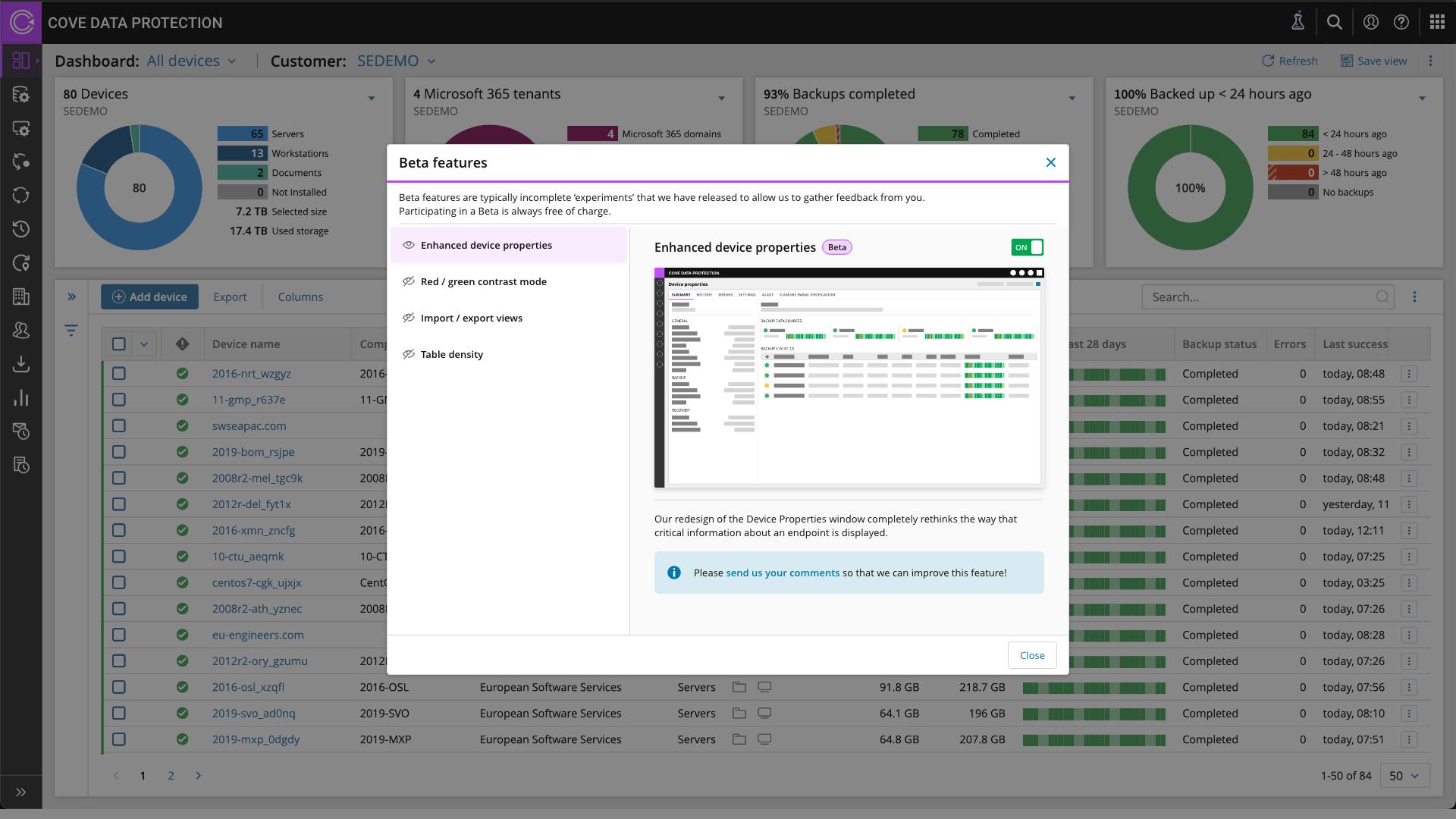
Objective
This project evaluates a new mechanism by which customers discover, try, and provide feedback on 'experimental' functionality within product.“Experimental” refers to features or functionality which the product team does not yet have total confidence to make the ‘default experience’ for our users. Therefore, we aim to evaluate ‘higher-risk’ releases in a 'low-risk’ manner.
Business needs
There’s a need to address the following internal problems when releasing features or functionality:
No standardised processes or existing mechanisms by which we can evaluate more 'experimental' functionality at scale. This considerably slows innovation in Cove and across the N-able ecosystem.
No standardised processes for releasing functionality of any fidelity, leading to considerable time sinks across UX, PM, and Engineering with most feature releases. This makes our ability to plan resources difficult at times.
Recruitment challenges hamper our ability to generate quantity and quality feedback in a reasonable timeframe.
User needs
While there may not be ‘explicit user needs’ for such a solution, there are the following considerable benefits:
Every user can gain visibility and early access to upcoming features or functionality meaning the entire user base has the opportunity to provide feedback and shape the product experience.
Greater confidence that the product experience and its capabilities are evolving as there’s increased transparency over what’s being worked on.
The baseline experience will enhance and evolve faster in Cove and consequently across the N-able ecosystem.
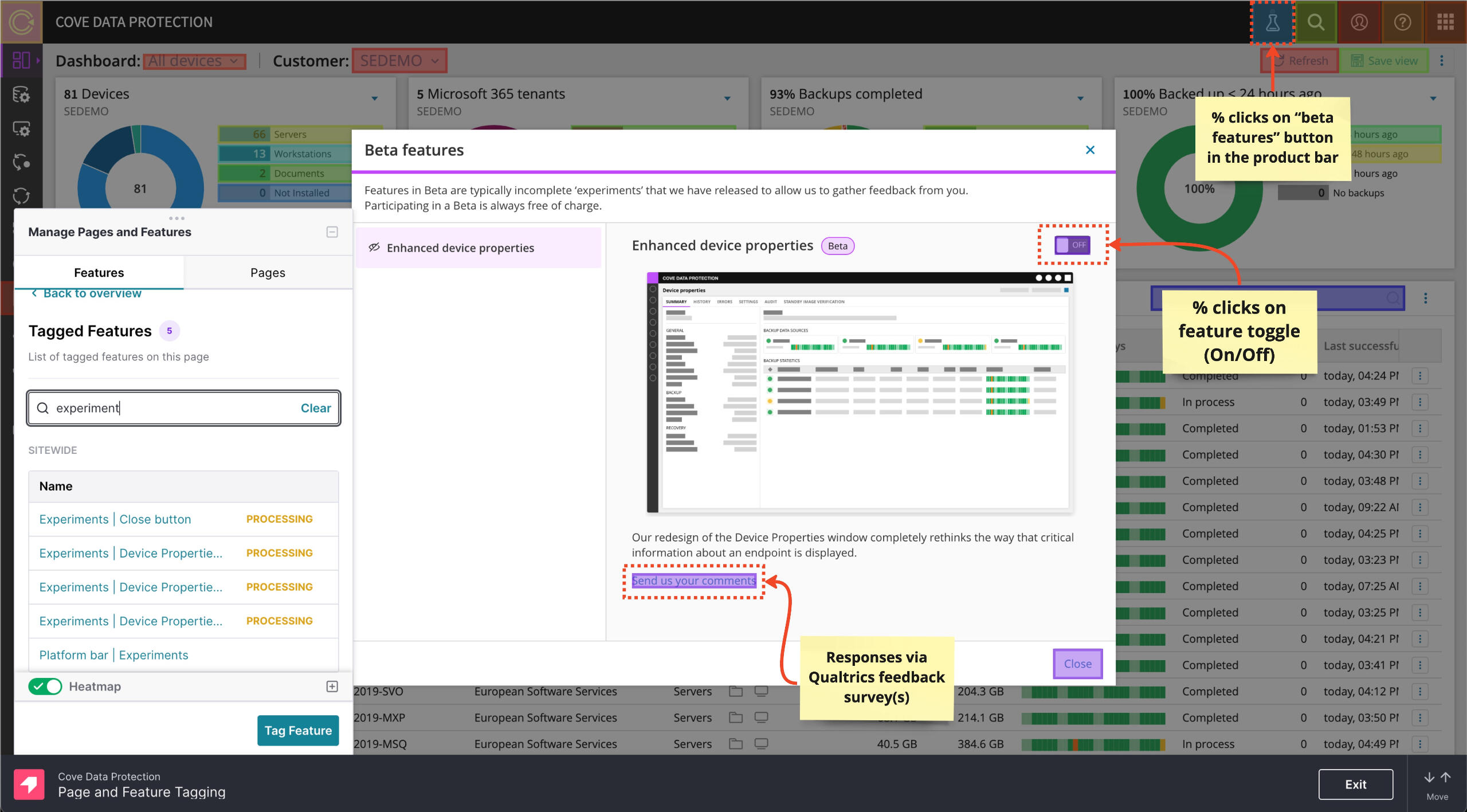
Responsibilities
Definition
Owned the end-to-end experience for a brand-new approach to releasing and communicating features at N-able.
Defined a strategy for releasing beta functionality to users, allowing for early access while minimising risks.
Lead the approach for monitoring usage and establishing routes to provide feature-specific feedback.
Alignment
Presented the approach and supplied supporting materials to the wider UX team for implementation in their products.
Planned workshop with key stakeholders to identify and prioritise further experience enhancements to roll out across the year.
Used the project's success as a catalyst for additional alignment on business definitions for Beta, Preview, and New features.
Outcomes
Aligned stakeholders on evaluating 'experimental' features and enhancements for N-able.
Implemented a scalable method for releasing and assessing experience enhancements with low risk.
Boosted engagement with 'experimental' features, ensuring thorough evaluation before making them the default.
Enhanced both the visibility and organic collection of in-product feedback.
Reduced reliance on external teams like Pendo for showcasing new capabilities to users.
Freed up resources for UX, PM, and Engineering by removing the need for a Limited Preview process.
Designing and communicating transformative UI
Revamping a classic UI requires clear communication of the benefits to internal stakeholders as well as the end user.
Background
The project's goal was to revamp a critical section of Cove's interface to enhance the way endpoint information is presented. To support the redesign, I conducted both internal and external research, providing key insights. Additionally, I developed a scalable approach for releasing and announcing major UI changes within the product.
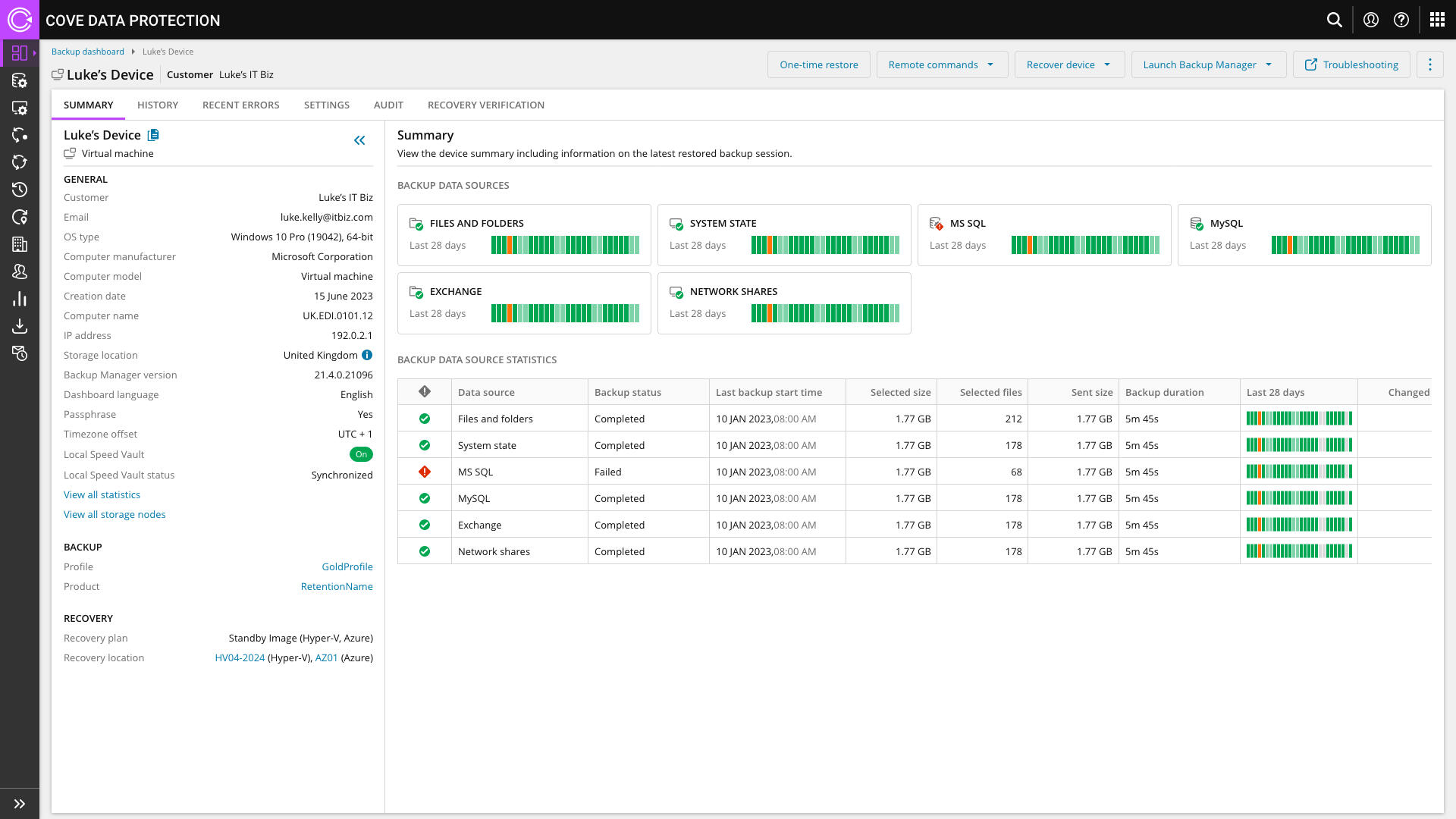
Objective
The project had three key objectives: to assess the current user experience, to design the future user experience, and to plan how to introduce the new interface while phasing out the classic one.
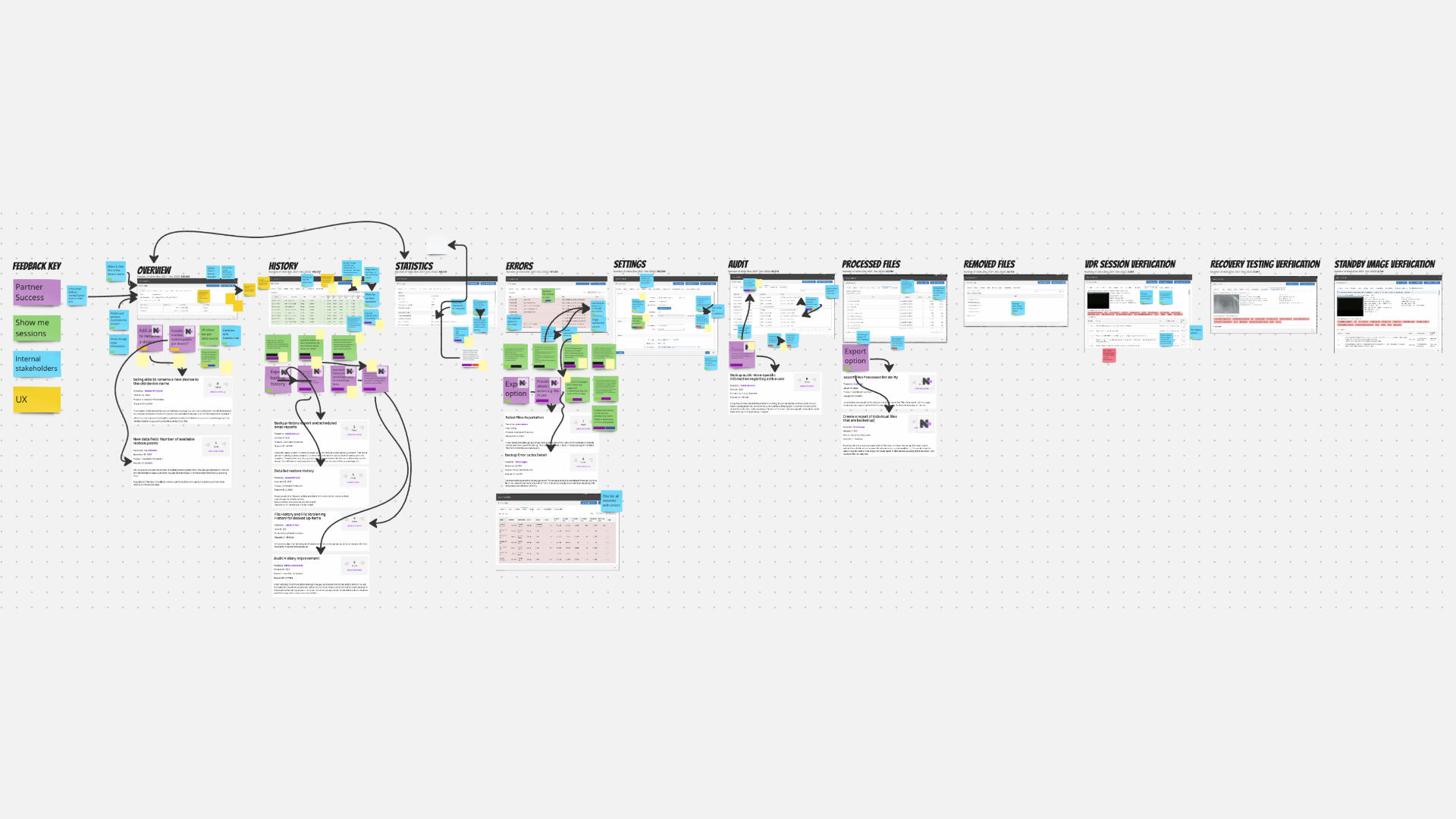
Responsibilities
Evaluate the current experience
Conducted internal stakeholder interviews with Project Managers, Sales, and Engineering to comprehensively understand identified opportunities.
Customer interviews revealed recurring pain points and areas for improving user experience.
Analysed data from Pendo and Google Analytics to confirm usage patterns and pinpoint areas of high engagement.
Scrutinised submissions from the 'Ideas site' to gather insights and suggestions for improvement.
Leveraged UX expertise to identify opportunities for enhancing usability and integrating internal knowledge to provide a more guided solution.
Define the future experience
Executed two rounds of high-fidelity design, utilising the design system, before developing an interactive prototype.
Recognised and documented reusable patterns and page layouts, contributing them to the design system for future use.
Delivered a comprehensive set of UI materials, encompassing empty states, interaction behaviors, and detailed specifications to guide developers in implementation.
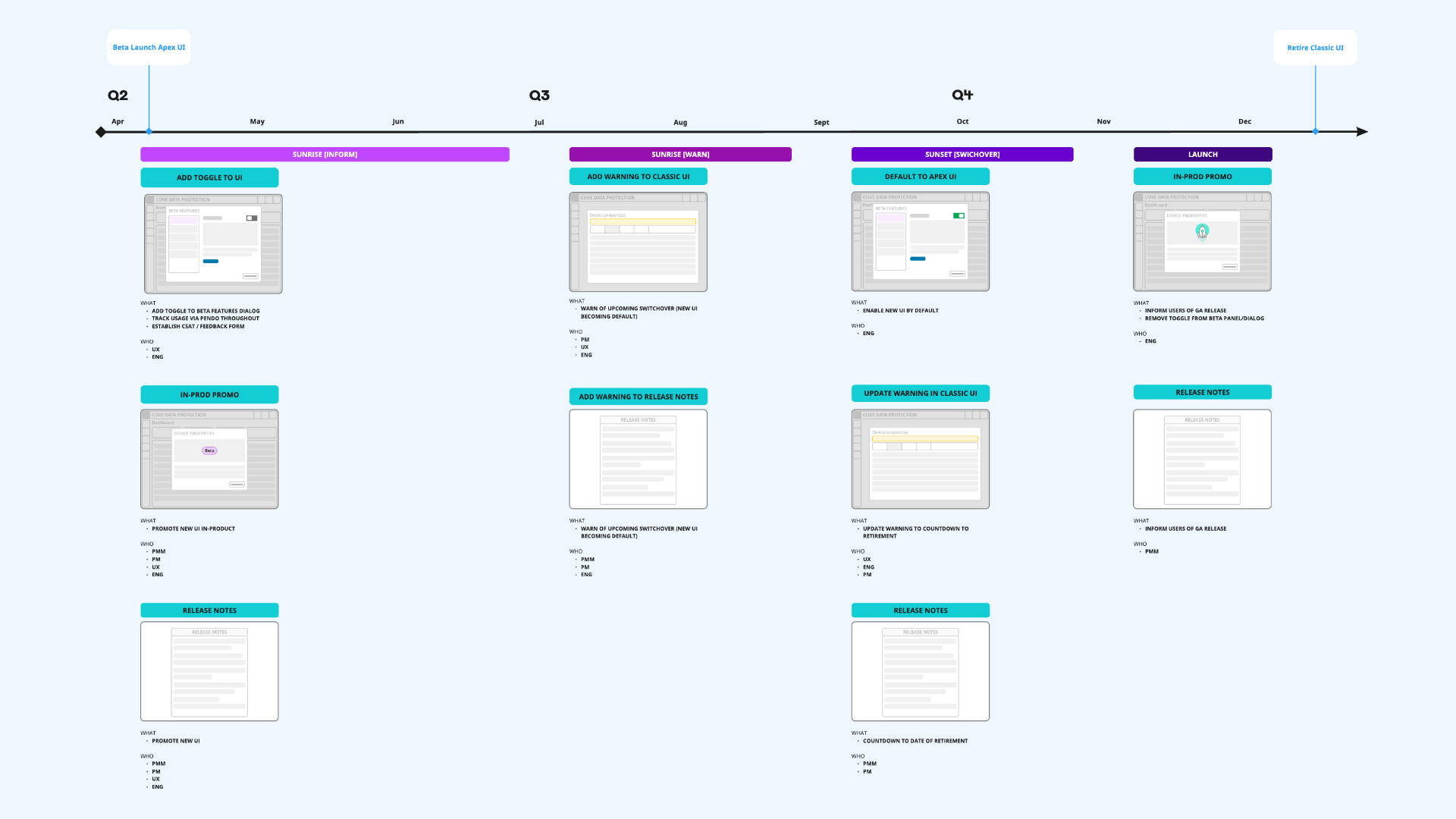
Sunset / Sunrise
Orchestrated a reusable project release timeline that is flexible enough to accommodate ongoing feedback throughout.
Outlined and documented a scalable approach to communicating significant UI changes across products.
Outcomes
Greatly enhanced the quality of the UI by alleviating key customer pain points whilst migrating to a modern design system.
Deployed a reusable and scalable process for sunrising new UI whilst sunsetting the classic equivalent.
UI patterns and layouts used for this project formed the standard for other products to align towards.